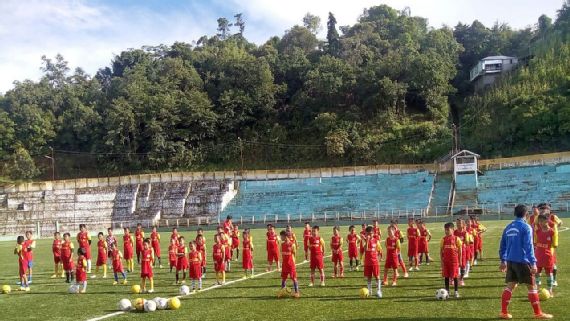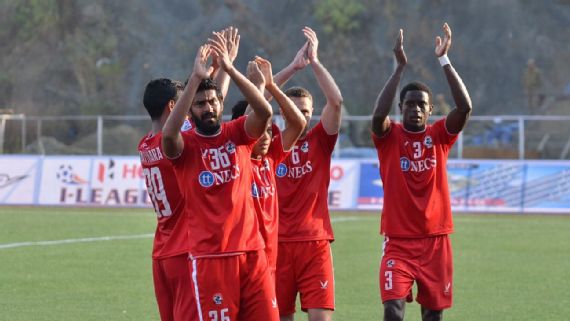 Days before the kick-off of the biggest football tournament in India comes the announcement of the country’s longest-duration football league, which could mark a rethink of how India introduces its young to the sport. Make that very young.
Days before the kick-off of the biggest football tournament in India comes the announcement of the country’s longest-duration football league, which could mark a rethink of how India introduces its young to the sport. Make that very young.
The Young Legends League, comprising Under-12 five vs five matches, will be held over more than six months from November in one of India’s smallest but most energised footballing states – Mizoram, where the game is rooted in the community. It is the first concrete piece of evidence of the reboot of the grassroots development structure that was planned with the announcement of the All-India Football Federation through the creation of ‘baby-leagues’ – a regular calendar of matches for children from age five.
The Baby Leagues project intends to give match play opportunities to Indian children well below the conventional age of 12-13 when they are taken to football with the aim to get them into the system. It is based on the leagues in South American countries, for example, that churn out footballers without facilities or formalised development structures of Europe.
They were expected to be launched in July in traditional footballing hubs like Bengal and Maharashtra, but have not been able to get off the ground. Mizoram has however, struck out on its own.
The league is scheduled to be held from November 11, 2017 all the way to July 23, 2018 and feature with weekly matches, lasting between 40-60 minutes. Its venue is the Chhangphut Ground in Champhai, headquarters of Mizoram’s eastern most district, a seven-hour-plus road journey from Aizawl, less than 20km from the Burmese border.
The YLL was announced along with a ten-year memorandum of understanding signed in Aizawl last week between the Mizoram Football Association, and the 8One Foundation, a private body working in the north-east on social development programmes including sport.
MFA secretary Lalnghinglova ‘Tetea’ Hmar said the YLL looks to provide regular competitive matches to Under-12 children to hone their footballing skills and the MFA intends to “increase the time children spend with the ball so as to inculcate both technical and social skills.”
The MFA has become a model state football association given the establishment of the Mizoram Premier League in 2012, which is competed by community-centric franchises in Aizawl. The MPL gave an opportunity for Mizo players to earn an income from football and the state’s presence in Indian football has snowballed since.
Mizoram won the Santosh Trophy in 2014, 49 of 91 I-League first division players from the North-East last season came from Mizoram and in April this year, Aizawl FC pulled off the biggest surprise in Indian football since independence, winning the I-League title.
Varun Achreja from 8One Foundation gave the examples of Lionel Messi who started his competitive football at the age of 4 with a club called Grandoli in Argentina and Cristiano Ronaldo at 7 with Andorinha in Portugal. Messi’s case – 500 goals with Newell’s Old Boys by the age of 13 – is always seen as a prime example of how bringing children into competitive football at an early age through community-driven leagues can only benefit their skills and opportunities among its most talented.
The YLL has been set into motion, Richard Hood, head of AIFF player development points out, as a fully independent and autonomous exercise which seeks to ensure a “long-term self-sustained and intensive youth calendar” for young Mizos. Hood believes its impact will be felt, “6-8 years from today” because he says, with its 10-year outlook the YLL will create and grow a playing culture that is part of the community in Champhai to start with.
Four of Mizoram’s current crop of professionals – Lalthuammawia, Lalchhuankima, Lalruatthara and Robert Lalthlamuana – come from Champhai district, the first three belonging to the town itself. Champhai has two artificial surfaces, a necessity in a hilly state, of which is it famously though not fully accurately, said that grass cannot grow. Mizoram has ensured that it has the nous to ensure that regardless of topograhical hurdles, football certainly can.
Source: BBC



